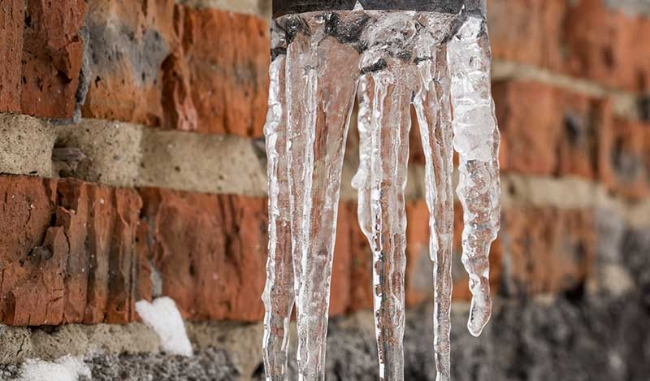Shielding Pipes from Cold Weather Issues: Essential Strategies
Shielding Pipes from Cold Weather Issues: Essential Strategies
Blog Article
Right here on the next paragraphs you'll find additional worthwhile facts on the subject of Preventing and dealing with frozen pipes.

Cold weather can damage your pipes, particularly by freezing pipelines. Here's just how to avoid it from taking place and what to do if it does.
Introduction
As temperatures decline, the risk of frozen pipelines increases, possibly causing costly fixings and water damage. Recognizing how to prevent frozen pipelines is important for property owners in chilly environments.
Understanding Icy Pipelines
What creates pipelines to ice up?
Pipelines freeze when revealed to temperatures listed below 32 ° F (0 ° C) for expanded periods. As water inside the pipes ices up, it broadens, taxing the pipe walls and potentially causing them to rupture.
Threats and damages
Icy pipelines can lead to water system disruptions, property damage, and expensive repair work. Burst pipes can flooding homes and trigger substantial architectural damages.
Signs of Frozen Pipeline
Determining icy pipelines early can avoid them from rupturing.
How to identify frozen pipes
Seek reduced water circulation from taps, unusual odors or noises from pipelines, and noticeable frost on subjected pipelines.
Avoidance Tips
Shielding susceptible pipelines
Cover pipelines in insulation sleeves or use warmth tape to shield them from freezing temperatures. Focus on pipes in unheated or external areas of the home.
Heating techniques
Keep interior rooms properly warmed, specifically areas with plumbing. Open cabinet doors to enable warm air to distribute around pipes under sinks.
Protecting Outdoor Plumbing
Yard tubes and exterior faucets
Disconnect and drain garden pipes prior to wintertime. Install frost-proof faucets or cover outdoor faucets with insulated caps.
What to Do If Your Pipes Freeze
Immediate actions to take
If you believe frozen pipes, maintain faucets open to relieve stress as the ice thaws. Use a hairdryer or towels taken in warm water to thaw pipelines slowly.
Long-Term Solutions
Structural modifications
Take into consideration rerouting pipelines away from outside walls or unheated areas. Add additional insulation to attic rooms, basements, and crawl spaces.
Updating insulation
Invest in top notch insulation for pipelines, attics, and walls. Correct insulation helps maintain consistent temperature levels and lowers the threat of frozen pipelines.
Conclusion
Avoiding frozen pipes calls for aggressive actions and fast reactions. By understanding the reasons, signs, and preventive measures, homeowners can protect their pipes throughout winter.
5 Ways to Prevent Frozen Pipes
Drain Outdoor Faucets and Disconnect Hoses
First, close the shut-off valve that controls the flow of water in the pipe to your outdoor faucet. Then, head outside to disconnect and drain your hose and open the outdoor faucet to allow the water to completely drain out of the line. Turn off the faucet when done. Finally, head back to the shut-off valve and drain the remaining water inside the pipe into a bucket or container. Additionally, if you have a home irrigation system, you should consider hiring an expert to clear the system of water each year.
Insulate Pipes
One of the best and most cost-effective methods for preventing frozen water pipes is to wrap your pipes with insulation. This is especially important for areas in your home that aren’t exposed to heat, such as an attic. We suggest using foam sleeves, which can typically be found at your local hardware store.
Keep Heat Running at 65
Your pipes are located inside your walls, and the temperature there is much colder than the rest of the house. To prevent your pipes from freezing, The Insurance Information Institute suggests that you keep your home heated to at least 65 degrees, even when traveling. You may want to invest in smart devices that can keep an eye on the temperature in your home while you’re away.
Leave Water Dripping
Moving water — even a small trickle — can prevent ice from forming inside your pipes. When freezing temps are imminent, start a drip of water from all faucets that serve exposed pipes. Leaving a few faucets running will also help relieve pressure inside the pipes and help prevent a rupture if the water inside freezes.
Open Cupboard Doors
Warm your kitchen and bathroom pipes by opening cupboards and vanities. You should also leave your interior doors ajar to help warm air circulate evenly throughout your home.

We were guided to that write-up about Helpful Tips to Prevent Frozen Pipes this Winter from a buddy on our other domain. Sharing is good. One never knows, you will be doing someone a favor. Many thanks for taking the time to read it.
Request A Quote Report this page